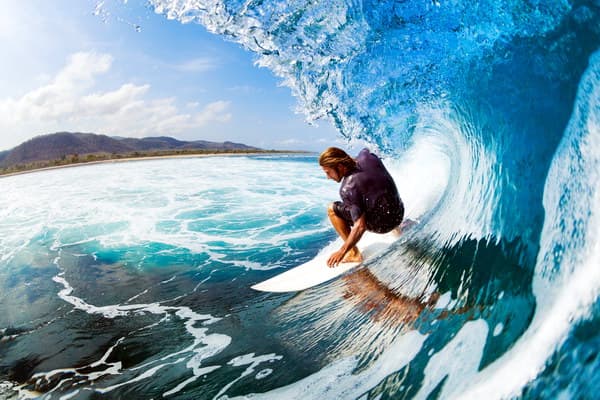Surfing, an exhilarating sport that involves riding waves on a board, has a rich and fascinating history that spans thousands of years. From its humble beginnings in ancient Polynesia to its global popularity today, surfing has evolved into a cultural phenomenon that has captured the hearts of millions around the world. This article explores the history of surfing, tracing its origins, development, and evolution into the sport we know today.
Ancient Origins
Surfing is believed to have originated in ancient Polynesia, where it was known as “heʻe nalu,” which translates to “wave sliding.” The exact origins of surfing are shrouded in mystery, but archaeological evidence suggests that the practice dates back thousands of years. Ancient petroglyphs found in Hawaii depict figures riding waves on wooden boards, indicating that surfing was an integral part of Polynesian culture and society.
Early Development
In its early days, surfing was not just a sport but also a deeply spiritual and cultural activity for the Polynesians. It was often associated with religious rituals and was reserved for the ruling class and elite members of society. Surfboards were crafted from local materials such as wood, and each board was meticulously carved and decorated, reflecting the craftsmanship and skill of the surfers.
Spread to the Pacific Islands
As Polynesians voyaged across the vast Pacific Ocean, they carried with them not just their belongings, but also their rich culture, including the art of surfing. This migration played a significant role in spreading surfing to other Pacific islands, where it took on new forms and meanings.
- Tahiti
Tahiti, known for its stunning landscapes and vibrant culture, became a hub for surfing in the Pacific. Here, surfing took on a more recreational form, with Tahitians enjoying the sport as a pastime rather than a religious or cultural practice. Tahitian surfers were known for their skill and agility in the water, and surfing became deeply ingrained in the local culture.
- Samoa
In Samoa, surfing became intertwined with traditional Samoan culture and rituals. Surfers in Samoa often used surfing as a way to connect with their ancestors and the ocean, viewing it as a spiritual experience. Samoan surfboards, known as “olo,” were long and heavy, allowing surfers to ride the powerful waves of the region.
- Tonga
In Tonga, surfing became a symbol of status and prestige, with only the elite members of society allowed to participate in the sport. Surfing in Tonga was seen as a way to demonstrate one’s strength, courage, and skill in the water. Tongan surfers were highly respected and admired for their ability to navigate the challenging waves of the region.
- Hawaii
Hawaii, often considered the birthplace of modern surfing, played a crucial role in the spread of the sport throughout the Pacific. Ancient Hawaiian society was deeply connected to the ocean, and surfing was an integral part of Hawaiian culture. Hawaiian surfers, or “ali’i,” were revered for their surfing prowess, and surfing played a central role in Hawaiian mythology and religion.
- Impact of European Contact
The arrival of European explorers and missionaries in the Pacific in the 18th century had a profound impact on surfing. While some missionaries viewed surfing as a heathen practice and sought to suppress it, others recognized its cultural significance and sought to preserve it. European explorers documented surfing in their journals and reports, helping to introduce the sport to the wider world.
Encounter with Western Explorers
Surfing remained largely unknown to the Western world until the late 18th century when European explorers and missionaries encountered it during their voyages to the Pacific islands. The first documented accounts of surfing by Westerners date back to the 18th century, with Captain James Cook’s expeditions to Hawaii.
Revival in Hawaii
Despite the initial interest from Westerners, surfing in Hawaii experienced a decline in the 19th century due to the influence of missionaries and the overthrow of the Hawaiian monarchy. However, surfing experienced a revival in the early 20th century thanks to the efforts of Hawaiian surfers such as Duke Kahanamoku, who helped popularize the sport both in Hawaii and abroad.
Evolution into a Global Sport
Surfing continued to grow in popularity throughout the 20th century, fueled by advancements in board design, the development of surf culture, and the rise of surfing competitions. The introduction of foam and fiberglass boards in the 1950s revolutionized the sport, making it more accessible to a wider audience.
Modern Surfing Culture
Today, surfing is a global phenomenon, with millions of enthusiasts around the world. Surfing has evolved into a diverse and vibrant culture, with its own language, fashion, and music. Surfing competitions such as the World Surf League (WSL) showcase the world’s best surfers competing in some of the most iconic surf spots around the globe.
Conclusion
The history of surfing is a testament to the enduring appeal of this ancient sport. From its origins in Polynesia to its global popularity today, surfing has captivated people of all ages and backgrounds. Whether you’re a seasoned pro or a beginner, surfing offers a unique and exhilarating experience that continues to thrill and inspire surfers around the world.
